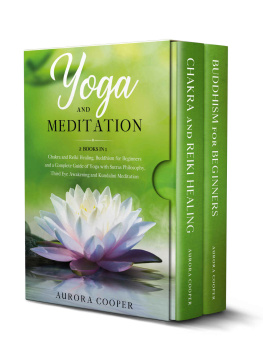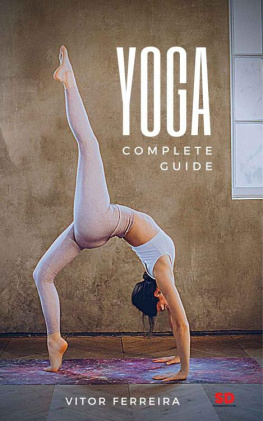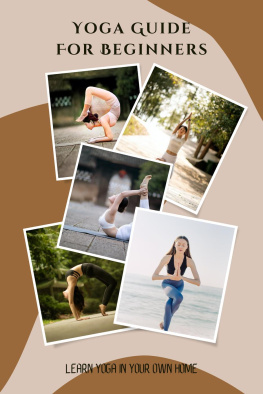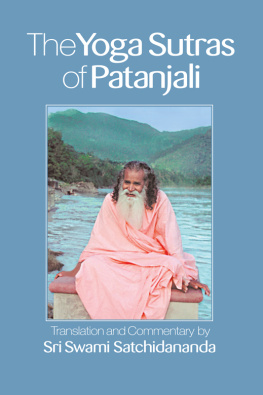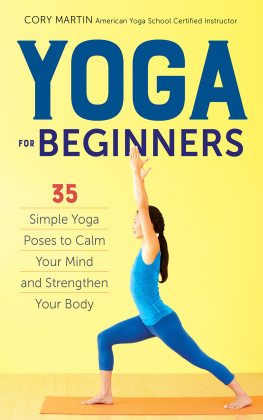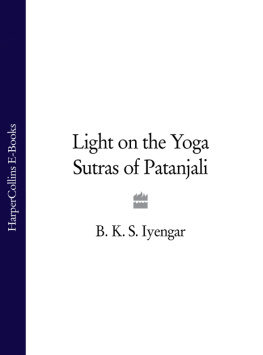THE PHILOSOPHY OF YOGA SUTRAS AND THE SECRET OF SLEEP MEDITATION AND DEEP RELAXATION WITH YOGA NIDRA. INCLUDES TEACHING OF YOGA POSES
All rights reserved. No part of this publication may be reproduced or distributed in any form or by any means, electronic or mechanical, including photocopying, recording, or by any information storage or retrieval system, without the prior written consent of the author.
Introduction
I'm sure that a lot of you think that since yoga is an old set of beliefs that not only was it first conceived in India, but the history of yoga also must feature significant events where many of the initial founders of yoga came into contact with other Asian inhabitants from territories outside the borders of India. This conviction might also lead some of you to reach the conclusion that perhaps yoga borrowed and, in some cases,, integrated ideas as a direct result of the Indian founders of yoga interacting with spiritual individuals who hailed from other parts of the Eastern hemisphere. Of course, it's understandable that many of you would harbor such thoughts about yoga, especially those who have never even taken a class centered on the teachings of yoga or when conversing with someone you chose to conceptualize your own interpretation of what yoga resembles in your own mind.
For many people, the very idea of starting yoga stems from such imagery because it is these vivid images that are perhaps incredibly enticing to many who wish to give yoga a try while for others, the word yoga is connected to the idea of being a challenge that would aim to push him or her outside the bounds of their own comfort zone. True, the history of yoga might not resemble the kind of history that is linked to the progression of a country such as the United States over a prolonged period of time that measures how various circumstances and factors compelled the country to shift its gears while continuing to develop its identity as a nation as a whole, but that does not mean that the history of yoga should be seen as something that you can just brush off. There are many details that are worth examining because each of the factors that have occurred in the past has determined the present-day fascination and even the obsession with what yoga has to offer. Thus, it is extremely imperative to examine yoga from a much deeper level in terms of analyzing its historical background as this is the best way that a person can develop a much more enriched and nuanced comprehension on how yoga has been able to spread all over the world and become something that many people native to American soil love to partake in.
There is a lot of mystery concerning the origins of yoga because when yoga was first implemented the writings that were correlated to yoga were conducted on palm leaves that were not exactly the sturdiest of materials to write on, thus a lot of what was written was susceptible to inevitable destruction, either in the form of disappearing, undergoing severe vandalism, or being consequently obliterated. Though there have been roughly 5,000 years of progress with regards to yoga, some people who have conducted studies on this have found that yoga is perhaps even older, stretching back as far as roughly 10,000 years into the past. Due to this fact, it is important that yogas history is separated into several major periods of time, which are connected to its birth, progress, and the people who would begin to follow its prominent teachings. While it is obvious that it began several years ago, around 5,000-10,0000 years to be more precise, the location in which yoga was conceived is also important to keep in mind.
The era in which yoga first emerged is known as the pre-classical period, and while it is true that yoga was developed on the Indian subcontinent, the region in which yoga was first cultivated was within the northern part of India; however, it should be noted that it was founded by a specific ancient civilization that is known as the Indus-Sarasvati. Despite the point mentioned earlier about how yoga was imprinted into the less sturdy material of palm leaves which has contributed to shrouding much of yoga in mystery, yoga has been mentioned in stronger material as well, such as a collection of written work that is considered to be quite old and is known as the Rig Veda. What is the Rig Veda?
Chapter 1.
History of Yoga

Yoga is incredibly and increasingly popular. This is because yoga is amazing. When most Americans hear the word yoga they think of the stretches and postures called asana (sana) that come to us from Hatha Yoga, and a well-rounded asana practice is indeed uniquely healing. In fact, it saved my life, which you can read all about in my first book, Yoga to Ease Anxiety.
There is, undeniably, an emphasis on the physical in American yoga culture. Even when the philosophy is taught, its usually from the perspective of how we can apply it to our lives today. This approach is super useful, but the teachings themselves are often taken out of context, which can lead to some confusion. What I hope to offer with this book is an introduction to the story of yoga, its history, and its philosophy in a linear way that is accessible to contemporary teachers and students of yoga.
It is not my intention to tell anyone what they have to believe or what they should or should not do in order to be a yogi or yogini (yogin). I just want to relate the history of yoga and yogic ideas in a casual, relevant way.
Its taken me a long time to feel like I know enough to share this information. I first became interested in Eastern philosophies as a teenager after reading the Transcendentalists and Beat poets. As an undergrad, I was a Religious Studies major in a department that took a historical approach, and as a grad student I studied mysticism.
When I decided I was going to commit to the practice of yoga, I read everything about it I could find. And when I decided to do a 200-hour teacher training, I simultaneously enrolled in an 800-hour course in the History, Philosophy, and Literature of Yoga with the great yogic scholar Georg Feuerstein. I felt that if I were going to represent the tradition, Id better understand it.
When yoga began, it was taught from one teacher to one student, both of whom had renounced the world in pursuit of spiritual liberation. Ive been fascinated by the question of how yoga went from that intimate and dedicated scenario to hour-long classes at the local Y. As a teacher, I have continued to bump up against questions, situations in modern yoga that make no sense when compared to its austere history. So, I kept reading, researching, and trying to find answers. Ive also spent the last few years serving as faculty for teacher trainings, where students often come up with some of the toughest and most interesting questions. Now I believe I have enough of the puzzle together to share it with others.
Its important to me to present an accurate picture of the yoga tradition. Its also important to me to present the information in a way that is relatable. Thats how it goes with yoga: its history is so vast and compelling that when you walk through one door you enter another room full of doors. I make no claim to being comprehensive; that would be impossible.
I also make no claim to objectivity. This is the product of my investigation into the spiritual path I practice and teach. I weave the history of asana throughout the book because its of interest to American yoga. And the texts I examine are the ones American yoga culture deems important. The translations I use are those that are accessible, as in both easily acquired and easily understood, or at least easier to understand than some of the more academically oriented translations.







